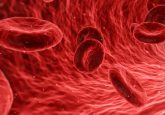New layer of gene regulation uncovered in non-Hodgkin’s lymphoma
Researchers from Weill Cornell Medical College (NY, USA) have identified thousands of mysterious genes underlying the most common form of non-Hodgkin’s lymphoma. The discovery sheds light on a new layer of gene regulation that may drive cancer and could one day lead to more effective treatment targets.
Diffuse large B-cell lymphoma (DLBCL) is an aggressive blood cancer which accounts for up to 30% of all non-Hodgkin’s lymphoma cases diagnosed each year in the USA. The molecular basis of the disease has long been a focus of attention; however, investigators now claim to have discovered thousands of new genes in 116 human lymphoma samples.
The genes identified in this investigation produce long noncoding RNAs (lncRNAs), which appear to regulate other genes that produce proteins. A total of 2632 different lncRNAs were observed, with a substantial number of similar lncRNAs also found in canine lymphoma. It is hoped these findings may improve our understanding of both the nature of lncRNAs and how they may act to promote DLBCL and perhaps other cancers.
“While we don’t know precisely what these molecules are doing, the fact that the majority – about two-thirds – of the long noncoding RNAs we found are expressed exclusively in lymphoma, and that many are found in both human and dog lymphoma, tells us that they are likely playing fundamental roles in this cancer,” explained senior author Olivier Elemento (Weill Cornell). “It is fascinating to us that after so many years spent decoding the genome, you can still find another 2,000-plus genes that look like regular genes – have all the features of normal genes – but which don’t code for proteins,” he added.
If lncRNAs are demonstrated to be regulating aspects of the development and growth of this lymphoma, it may be possible to design antisense oligonucleotide drugs to bind and inactivate them, thus presenting an exciting new line of investigation.




